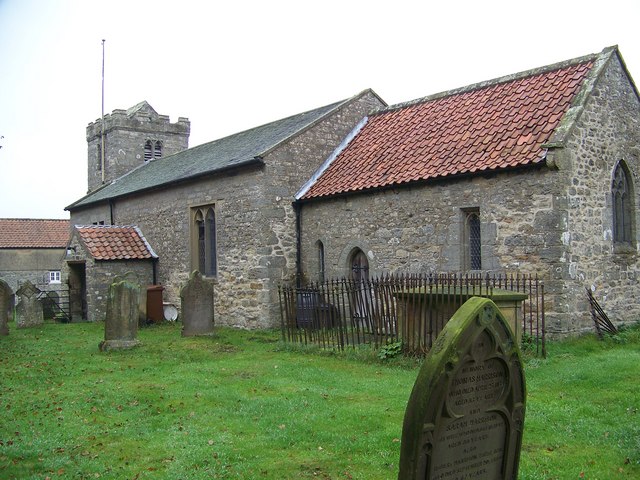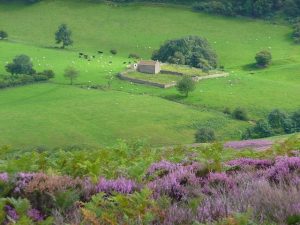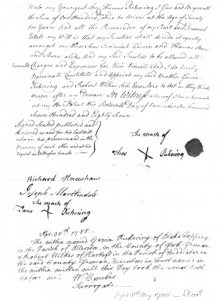
St Giles, Lockton, Yorkshire
Thomas Pickering was born in 1726 in Lockton, Yorkshire, England, the son of Gawan Pickering 1703-1772 and Mary Dickinson 1701-1743.
He was at baptised on 20 November 1726 at Lockton.
Thomas married Hannah Wood on 6 December 1757 at St Giles, Lockton.
Thomas and Hannah had six children –
- Jeremiah born 1761
- Margaret born 1762 died 1848. Married William Huggit, 4 children.
- Mary born 1763 died 1832. Married John Metcalf, 5 children.
- Jeremy born 1764 Crosscliff, died 1840 Lockton. Married Mary Harland, 12 kids.
- Gawan born 1769 died 1851 Sydney, Australia. Married Jane Allanson and Mary Toft.
- Thomas born 1769 died 1841 Pickering. Married Jane Kidd. 9 children.
Thomas died in November 1787 while living in the Hole of Horcum, Yorkshire and was buried at Lockton on 19 November 1787. His burial record states he was 64 years old.
Thomas’s will leaves bequests to his brother Gowan, his eldest son Jeremiah, eldest daughter Margaret Huggit, daughter Mary Metcalf, and sons Gawin and Thomas.
Thomas farmed this land, and in his last will and testament dated 1787 he bequeaths his copyhold land in Horcum to his brother Gawin Pickering.
Copyhold tenure was a form of customary tenure of land common in England from the Middle Ages. A tenant who held land in this way was legally known as a copyholder. The privileges granted to each tenant, and the exact services he was to render to the lord of the manor in return for them, were described in the roll or book kept by the steward, who gave a copy of the relevant entry to the tenant. Consequently, these tenants were afterwards called copyholders, in contrast to freeholders.

Thomas Pickering’s farmhouse (or one like it) Hole of Horcum, North Yorkshire Moors
The specific rights and duties of copyholders varied greatly from one manor to another and many were established by custom. Initially, some works and services to the lord were required of copyholders (four days’ work per year for example), but these were commuted later to a rent equivalent. Each manor custom laid out rights to use various resources of the land such as wood and pasture, and numbers of animals allowed on the common.
Thomas also leaves bequests to his ‘eldest son Jeremiah Pickering’ 100 pounds, his utensils of husbandry and 40 pounds to his ‘eldest daughter Margaret Huggit’, 20 pounds to his ‘youngest son Thomas’, 40 pounds to ‘daughter Mary Metcalf’, and to his ‘second youngest son Gawin’, 100 pounds.
An inventory appears with the will listing his household goods as two tables, two beds and bedding, chairs, pots and pans, 150 sheep, five cows and two oxen, two horses, corn and hay.

Page 2 of the will of Thomas Pickering showing his mark 1787
It appears Thomas made his will on his deathbed, as he was unable to sign, leaving his mark only on it.
He signed the will on 16 November 1787 and was buried three days later on 19 November in Lockton, aged 64, when Gawan was 18, three years shy of being of a legal age to receive his inheritance.

